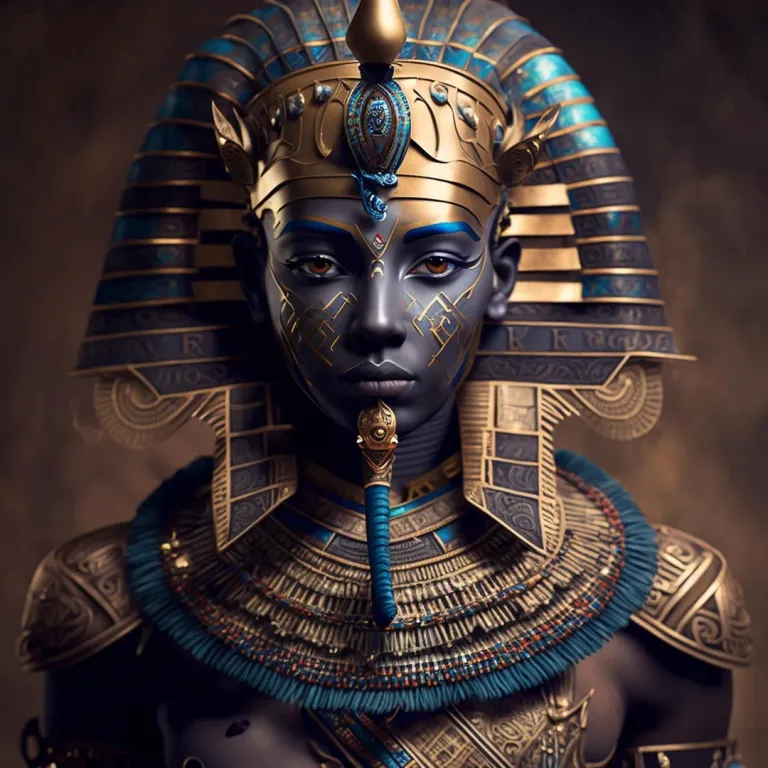Akhenaten: The Heretic Pharaoh and the God from the Sun
Akhenaten: The Heretic Pharaoh and the God from the Sun
In the golden sands of ancient Egypt, a pharaoh rose who defied the gods, rewrote the spiritual order, and may have unlocked secrets far beyond our world. His name was Akhenaten, and his reign marked one of the most mysterious and radical chapters in Egyptian history. But was his "one god" merely a religious experiment… or something more?
Who Was Akhenaten?
Akhenaten ruled Egypt during the 18th dynasty, around 1353–1336 BCE. Born as Amenhotep IV, he was the son of the powerful pharaoh Amenhotep III. But unlike his predecessors, Akhenaten didn’t follow tradition—he shattered it.
Soon after taking the throne, he changed his name to Akhenaten, meaning “Effective for the Aten.” He abandoned the sprawling temples of Egypt’s many gods and built a new capital city from scratch: Akhetaten, now known as Amarna.
Why? Because he believed there was only one true god—Aten, the radiant sun disc.
Why Did Akhenaten Create One God?
At a time when Egypt’s religion was full of powerful gods like Osiris, Isis, and Amun-Ra, Akhenaten did the unthinkable: he declared that only the Aten should be worshipped. This was the first known attempt at monotheism in recorded history.
But why?
Some say Akhenaten was a visionary—a spiritual reformer ahead of his time. Others believe he was trying to break the power of the Amun priesthood, which had grown wealthier and more influential than the pharaoh himself. By wiping out the old gods, Akhenaten may have been trying to centralize power under the Aten—and himself.
Still, others whisper of stranger truths…
Was Amun-Ra More Than a God?
Here’s where it gets interesting: Amun-Ra—before Akhenaten’s revolution—was the supreme deity in Egypt, a fusion of Amun (the hidden one) and Ra (the sun god). His presence stretched across temples, prayers, and the Pharaoh’s divine right to rule.
However, some researchers have noticed that Amun-Ra resembles descriptions of ancient sky-beings—powerful entities who descended from the stars, brought knowledge, and were worshipped as gods. In the Sumerian world, these beings were called the Anunnaki. Could Amun-Ra have been one of them?
Was Akhenaten’s Aten not a sun god at all, but a representation of a celestial power—a craft, a presence, or an intelligence that he was in direct contact with?
There’s no hard proof, but the depictions of Aten—a shining disc with rays ending in tiny hands—have fueled decades of speculation. Was it a metaphor for divine energy… or something seen in the sky?
The Golden Age & Lost Kingships
Akhenaten’s reign occurred during Egypt’s so-called Golden Age—a time of prosperity, art, and global influence. Yet when he died, his name was scrubbed from history, his city abandoned, and the old gods restored. It was as if Egypt wanted to erase every trace of him.
Curiously, ancient Sumer—Egypt’s cultural predecessor—also spoke of a divine kingship handed down from the heavens. The Sumerian King List even claims that kings ruled for thousands of years before the flood, often under the guidance of the Anunnaki. Both cultures believed that power, wisdom, and rule came from beyond the Earth.
Conclusion: Pharaoh, Prophet… or Messenger?
Akhenaten’s brief reign remains an enigma. Was he a political rebel, a spiritual visionary, or something else entirely? Did he receive divine knowledge from an unseen force in the sky? Was Aten a true god—or a being remembered as one?
Whatever the truth, Akhenaten left behind a legacy that still puzzles historians and mystics alike. In the silence of the desert, in the ruins of Amarna, the sun still rises—and maybe, just maybe, so does the mystery of the one god from the stars.
Posted by Waivio guest: @waivio_cosmicsecrets

